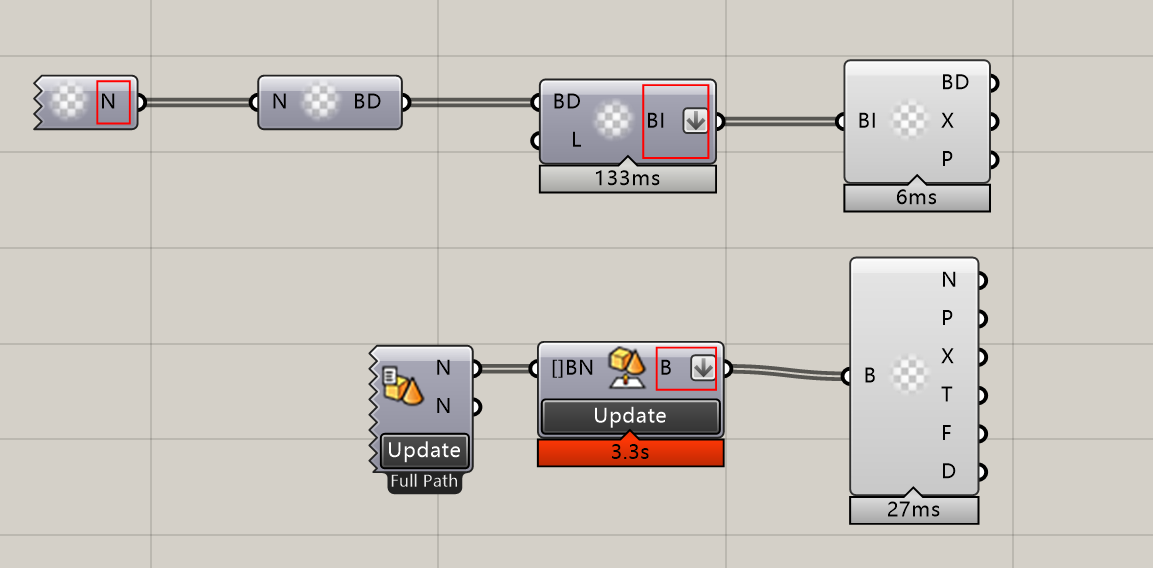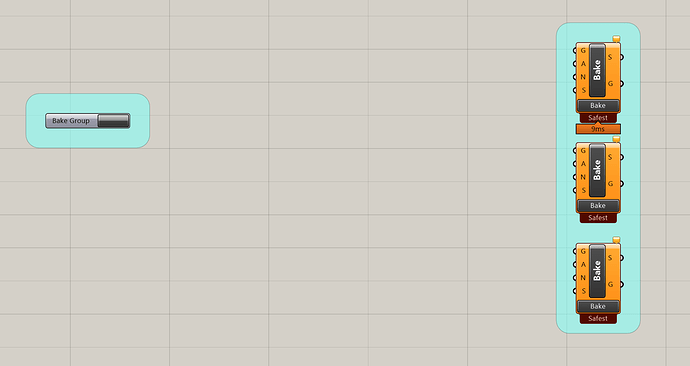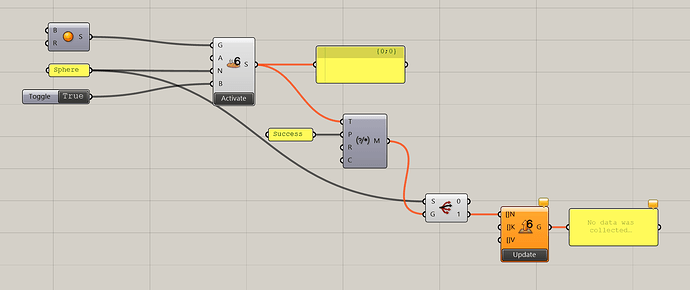The previous version did have the boolean input, as well as the Bake All button. We’re happy to bring it back.
As some background, here is why we took it out: Best practice is to not modify the Rhino Document until after the GH script has completed its solution. This is for good reason, because otherwise the conditions around your script are volatile / unpredictable.
For example, if in the process of baking, you delete / replace geometry that was an input for your script, or was an input downstream, you could be invalidating the rest of your script.
Consider this use case: Someone wants to bake some geometry, and then reference the new version downstream. You might think you could use the set-up below to bake and then re-reference with a single trigger.
Unfortunately there’s no way to guarantee that Grasshopper executes the Bake component before the Reference component. This is a trivial example, but I’m giving it to explain that by removing the input, you ensure that the Rhino operations and Grasshopper operations have a clear separation.
I don’t know that limiting the interaction to a button “breaks the possibilities of Grasshopper” so much as it “ensures robust behavior”.
This was an experiment (that’s part of what beta’s are for), but clearly there is a lot of demand for the toggle, so we’ll put it back.
That said, I would be interested to understand more about what you’re trying to do with looping and baking. It’s good to know how you’re trying to use the plugin, to see how we can support that in the best way, especially in a situation where it sounds like you’re doing a lot of back-and-forth interactions between the Rhino doc and the Grasshopper definition.
Regarding these comments:
I would just like to say, if you prefer Human, use Human. Andrew wrote a great plugin that is beloved by many. It also does a lot of things that eleFront doesn’t, and vice versa. We’re not trying to out-do it or take its users. We make this plugin to do what we need to do, and share it with the hopes that others find it useful and that it encourages well-structured models.









